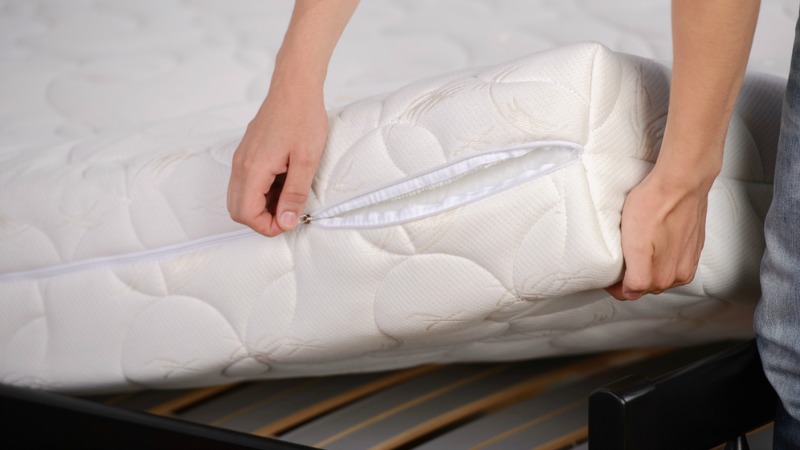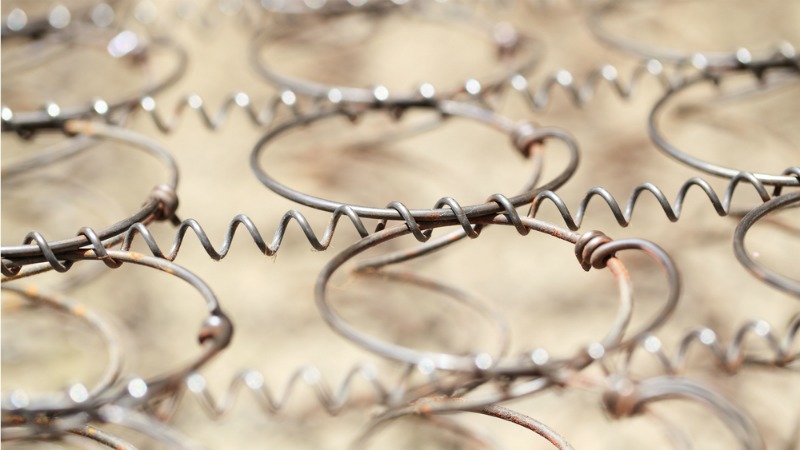Where Do Mattresses Go When You Recycle Them?
4 min read
Last Modified 3 March 2021 First Added 29 March 2017
Recycling has become a part of our everyday routines. We separate our waste into relevant bins for recycling, but would you ever consider doing this with your mattress? We’ve all had the struggle of moving a mattress out of our home and wondering how we will dispose of it. Instead of just taking it to landfill and forgetting about it, we look at what happens when you recycle your mattress.
Mattresses are made of recyclable products that can all be put to better use. When you take your mattress to a landfill site, it simply gets dumped in the ground with the rest of the rubbish. We send an estimated 167,000 tonnes of mattresses to landfill each year in the UK. That’s the same weight as roughly 30,365 elephants! Recycling is also a lot more beneficial for the environment as it reuses items in a sustainable way.

Depending on the type and quality of the mattress once you’re finished with it, you could potentially recycle all of it. The first stage of the recycling process is mattress disassembly. This is where the different component materials are segregated and compacted into large bales for efficient onward transport to the following end recycling destinations.
We spoke to Richard Allsopp, the director of Circom, who manages the recycling for Dreams mattresses. He told us what happens when you send your old mattress to them.
These are melted down and processed at a metal recycling plant where they are melted down and cast back into new light iron products.
Some mattresses have a layer of latex or foam for padding. The foam is either baled and sent to a waste-to-energy plant for energy from waste generation, or cleaned and used in the manufacture of industrial carpet underlay.

Most mattresses, unless they are memory foam, will be filled with wadding of some kind. Polyester wadding is utilised in the fibre blending industry as a replacement for virgin materials. Once reprocessed, the polyester fibres are used in various manufacturing processes including the filling of pet cushions.
Mattress covers and other material including shoddy fibres are generally very difficult to recycle. This is due to the varying levels of contamination and the limited legally compliant end markets for these materials. The materials are processed into refuse-derived fuel for use in energy from waste facilities as a sustainable alternative to fossil fuels thereby creating renewable green energy and heat. Allsopp says, ‘We are constantly looking at new legally compliant recycling outlets for these materials.’
Nowadays it’s a lot easier to recycle your mattress. A lot of companies now offer the chance to recycle your old mattress for you if you buy a new one from them. At Dreams, we offer this simple service which can be added to your new mattress order, then we’ll pick up your old mattress when we deliver your new one. None of the materials from our recycled mattresses go to landfill.
Read more about Dreams Recycling Service
Alternatively, if you simply need to get rid of a mattress, you could arrange to have your local council collect it. Most councils charge a small fee and require you to leave the mattress outside your property. However, you will know it has been disposed of responsibly. There are also many companies that will come and collect your mattress but, again, they often charge a fee.
The most important thing to remember is never to fly tip your mattress or leave it lying around outside!
Do you know any other services for mattress recycling? Let us know in the comments!